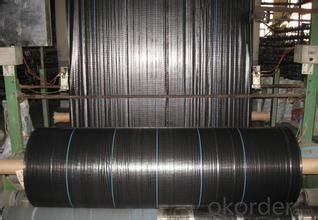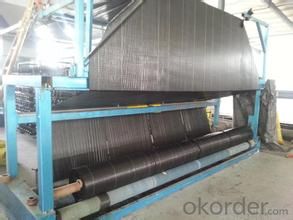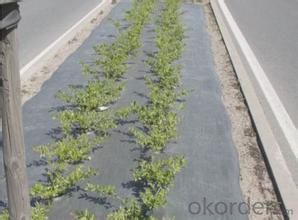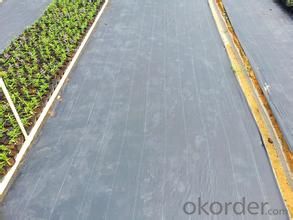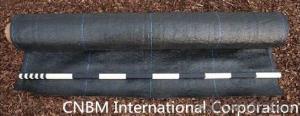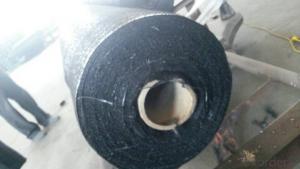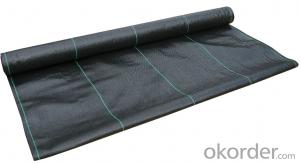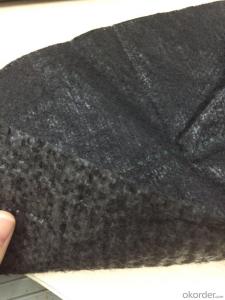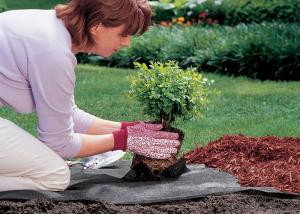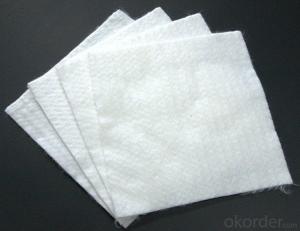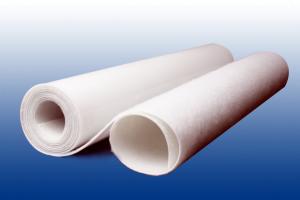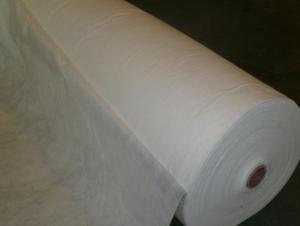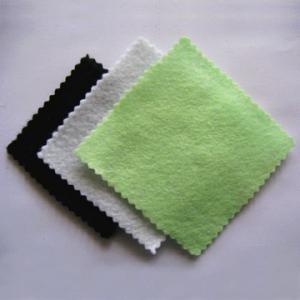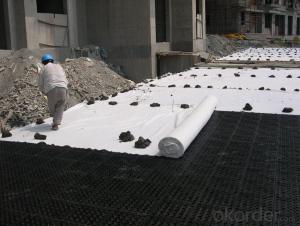Geotextile Under Riprap Silt Fence with Wooden Stake/Weed Barrier Fabric
- Loading Port:
- Qingdao
- Payment Terms:
- TT OR LC
- Min Order Qty:
- 1000 roll
- Supply Capability:
- 100000 roll/month
OKorder Service Pledge
OKorder Financial Service
You Might Also Like
1.Weed Barrier Fabric Description:
Weed Barrier Fabric, is a structure composed primarily of geotechnical fabric and that is used as a form of sediment control.These temporary barriers are relatively low in cost, especially when compared to the damages they can prevent. They keep loose soils from traveling into local bodies of water and they also minimize the impact that various forms of development can have on surrounding wildlife.


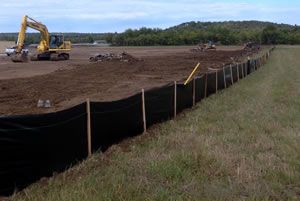

2.Weed Barrier Fabric Functions and Features:
1)Excellent weed control
2)Excellent UV resistance
3)Moisture,fertilizers,air reach plants to allow for healthy soil
4)Good water and air permeability
5)Exceptional toughness and strength
6)Durable,tear-resistant,anti-rot and anti-mildew
7)Light weight,easy to install,follows natural ground contours
8)Ideal for use in landscaped beds,under decks and walkways
9)Fashionable design,high quality,competitive price
10)Long service life
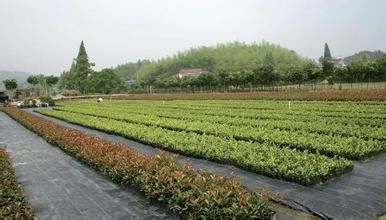
3. Weed Barrier Fabric Usage:
1.Prevent leakage disposal in landfill or waste water or waste dregs disposing field.
2.River bank ,lake dam ,mine remainings ,resevoir ,tunnel ,liquid storage pool(pit ,mine)
3.Preventing leakage in subway ,basement ,tunnel ,hole .
4.Anti-salt leakage in roadbed and other ground sill.
5.The plane direction laying of dam ,the vertical direction laying for ground sill.used in the construction fence and waste material field.
6.Used in ground sill of road ,highway ,railway and waterproof layer of welling clay and wet collapsed loess.
7.Preventing leakage on rooftop.
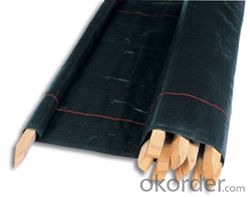

4. FAQ:
Q1: What is your minimum order quantity?
A:The minimum order quantity is 5000 ,but it is negotiable.
Q2:What is your payment terms?
A: T/T,Western Union,Paypal,L/C...
Q3:What is your delivery time?
A:Production time usually costs 2-20 days.
Waiting to cooperate with you!
- Q: What are the benefits of using geotextiles in construction projects?
- Geotextiles offer numerous benefits in construction projects. Firstly, they provide effective soil stabilization by preventing erosion, reducing sedimentation, and enhancing soil strength. Secondly, they act as a barrier against weed growth, enhancing the aesthetics and longevity of the project. Additionally, geotextiles facilitate efficient drainage, preventing water accumulation and potential damage to structures. They also aid in separation and filtration, preventing the mixing of different materials and promoting the flow of water. Furthermore, geotextiles are cost-effective and easy to install, saving both time and labor. Overall, the use of geotextiles in construction projects improves durability, reduces maintenance needs, and ensures long-term sustainability.
- Q: What are the advantages of using geotextiles in green building design?
- Geotextiles offer several advantages in green building design. Firstly, they help in erosion control by preventing soil erosion and protecting the surrounding environment. Secondly, geotextiles act as a filtration system, promoting water drainage while retaining fine particles, thus enhancing water quality. Additionally, they provide stability and reinforcement to the soil, ensuring the structural integrity of the building's foundation. Geotextiles also aid in weed control by preventing the growth of unwanted vegetation. Lastly, these materials are often made from recycled materials, making them an eco-friendly choice for sustainable construction practices.
- Q: Can geotextiles be used in geosynthetic encased columns?
- Yes, geotextiles can be used in geosynthetic encased columns. Geotextiles are commonly used in geosynthetic encased columns as a reinforcement material to enhance the load-bearing capacity and stability of the structure. They provide reinforcement and prevent soil erosion or migration, making them suitable for use in geosynthetic encased columns.
- Q: Can geotextiles be used in coastal protection projects?
- Yes, geotextiles can be used in coastal protection projects. Geotextiles are materials that are designed to be placed in the ground or water and provide soil stabilization and erosion control. In coastal areas, they can be used to prevent erosion of beaches or dunes by acting as a barrier against wave energy and preventing sediment loss. Geotextiles can also be employed in the construction of revetments, breakwaters, or other coastal structures to enhance their stability and longevity.
- Q: Where to find the right geotextile
- Geotextile types are many, according to the manufacturing process of spinning, woven, woven, according to the material is divided into filaments, short wire and so on, if the most suitable geotextile should be the project requirements are not very strict , Generally like building coverage, road maintenance, etc., like this price is generally around 0.5 angle
- Q: Can geotextiles be used for filtration purposes?
- Yes, geotextiles can be used for filtration purposes. They are specifically designed to allow water to pass through while retaining soil and other particles, making them effective for various filtration applications such as preventing erosion, drainage systems, and sediment control.
- Q: Geotextile drainage network and geotextile how to heat stick
- Geotextile and geotextile crimp part of the use of sewing or hot air welding. Hot air welding is the connection method of filament geotextile, that is, with the hot air gun on the connection of two pieces of cloth instantaneous high temperature heating, so that part of the molten state, and immediately use a certain external force to make it firmly together. In the case of wet (rain and snow) weather can not be hot adhesive connection, geotextile should take another method of a suture connection method, that is, with a dedicated sewing machine for two-wire suture connection, and the use of anti-chemical UV suture.
- Q: Are geotextiles commonly used in mining tailings management?
- Yes, geotextiles are commonly used in mining tailings management. They are often employed to improve the stability and drainage of tailings dams, prevent erosion, and reduce seepage of contaminants into the surrounding environment. Geotextiles offer effective reinforcement and filtration properties, making them a valuable tool in the management of mining tailings.
- Q: Can geotextiles be used in geotextile wrapped columns?
- Yes, geotextiles can be used in geotextile wrapped columns. Geotextiles are commonly used as a wrapping material for columns in geotechnical engineering applications. They provide reinforcement and confinement to the columns, enhancing their load-bearing capacity and stability. Additionally, geotextiles help prevent soil erosion and facilitate proper drainage, further improving the performance of geotextile wrapped columns.
- Q: Mainly how to filter layer construction, cutting for the weak weathering rock
- The walls behind the sandbags ah, but in most cases are mechanical backfill, and then the top surface of a layer of sandbags and composite drainage network mean
Send your message to us
Geotextile Under Riprap Silt Fence with Wooden Stake/Weed Barrier Fabric
- Loading Port:
- Qingdao
- Payment Terms:
- TT OR LC
- Min Order Qty:
- 1000 roll
- Supply Capability:
- 100000 roll/month
OKorder Service Pledge
OKorder Financial Service
Similar products
Hot products
Hot Searches
Related keywords







